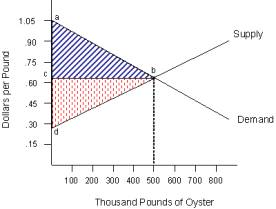|
from The Worldview Literacy Book copyright 2009 back to worldview theme #19 |
| Discussion
Economic systems involve individuals, socioeconomic and political
institutions within the society producing, distributing, and consuming
goods and services, deciding questions of ownership, and allocating
economic resources (and their costs and benefits).
How these functions are handled depends on the particular system:
capitalism, collectivism, socialism (theme #49B), co-operative
(participatory) economics (theme #48) and combinations or variations of
them.
Economic Individualism is linked to free market use of
capital—which can take the
physical form of money, raw materials, buildings, equipment,
inventories, etc. or the human form of skills, abilities, know how, etc.
While economists have long distinguished between physical capital
and human capital, some have recently extended this scheme to include
natural capital (see theme #40). Capitalism
involves 1) private individual or
corporate ownership of capital goods, 2) private rather than state
control of investment, and 3) pricing, production and distribution of
goods (for the most part) by agents or forces operating within the free
market system.
Those embracing "Economic Individualism" believe each
individual should be allowed to make economic decisions with little or
no government interference. Big
fans of laissez faire capitalism and its 20th century neoclassical
economics incarnation, they abhor collectivism
and socialism. They
believe the free market
system is far superior to any centrally planned economy in producing and
allocating goods and services.
The participants in the free market system are ideally thought of
as independent economic agents
behaving rationally: individuals seeking to maximize utility (satisfaction
derived from a particular purchase) or
businesses aiming for maximum profits.
They do this by buying and selling factors of production: land
(including natural resources), labor, and capital.
Prices in the free market system fluctuate according to supply
and demand. In actuality,
it is composed of many individual markets where individuals and firms
buy and sell a specific good or service—such as the oysters charted in
Figure #19.
In such markets, buyers can be thought of as (all together
through their independent actions) establishing a demand curve: a plot
of the price they are willing to pay for a commodity vs. the number of
commodity units they demand.
This curve pro-vides the details of the general observation that
as prices fall the demand rises. Sellers
similarly establish a supply curve: a plot of the price they will charge
for various amounts of commodity units.
This curve provides the details of the general observation that
if they can get higher prices, sellers will rush to make more of the
commodity available—whereas if prices are low
they have little incentive to do so.
Where demand and supply meet —where their curves
intersect—determines the commodity's so called equilibrium price.
This is the price that can be maintained. If prices fall below that price there is excess demand,
which |
Discussion—continued soon leads to a price increase.
If prices rise above equilibrium price, sales fall, increasing
supply, leading to a price decrease.
In establishing this price, the free market also in effect
allocates resources: giving commodities to those who can pay for them,
and withholding them from those lacking in money or desire.
The market system can be modeled as a closed system, with capital
flowing into production, and output being consumed— increasing utility
for some and capital for others. Production efficiency is linked to
productivity—production output per unit of input. A business's profits can be reinvested to make labor and
capital more productive. Overall
economic efficiency can be
achieved by either minimizing costs while maximizing production, wisely
allocating consumption related expenditures to maximize consumer
satisfaction, or a combination of both.
The market system has been called "one of the
most extra-ordinary social inventions in human history."
In arguing this, economists Robert Heilbroner and Lester Thurow
note how its development overcame significant problems of pre-market
societies based on 1) tradition and 2) authoritarian command.
The former ones were "inert, passive, changeless," the
latter ones "[given] the presence of political power in the
economic mechanism [were] an endless source of economic
inefficiency."
Left alone, the market system can provide a dynamic,
self-enforcing framework for economic transactions among knowledgeable,
rational, independent agents to occur and for economic problems to
naturally work themselves out. When
those agents are ignorant, have perverse, irrational expectations
(perhaps due to unfounded rumors or panic), or work in collusion with
others, markets can fail. This
can also happen when public
goods are involved, and/or economic problems cross some line and become
social, environmental, or health ones. Then public demand can force
governments to act for the common good, to right social or environmental
wrongs. Where
markets fail to allocate adequate resources to poor
people—pricing them out of participating—governments often step in.
When businesses or markets fail and governments intervene, free
markets become not so free! Some
intervention is accepted by nearly everyone: laws to support the market
system (maintaining the monetary system, enforcing contracts, private
property rights, etc.) and its competitive framework (combating fraud,
unfair monopoly, etc.) Beyond
that, economic individualists disdain government meddling to set prices,
provide subsidies, bailout private firms in exchange for an
ownership stake, etc. They
often oppose raising taxes to fund social programs—which social
welfare states (theme #49A) depend on.
They especially don't like programs to redistribute income.
With the global economic crisis casting doubt on "markets
know best," by 2009 many governments were looking
beyond neoclassical economics to restore prosperity.
In the USA, in particular, it was not a fun time to be an
economic individualist! |
|
Figure
#19 How the
Market Sets the Price Through Supply and Demand
from
NOAA Coastal Services Center
|
|
